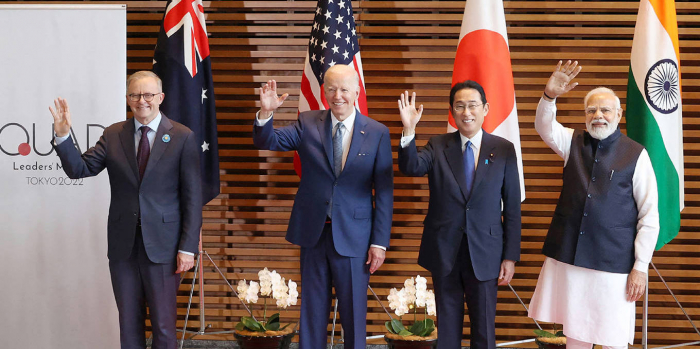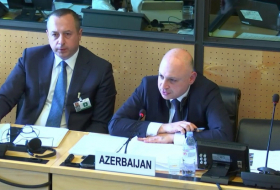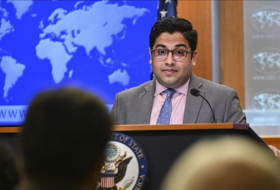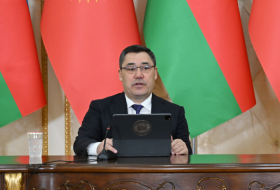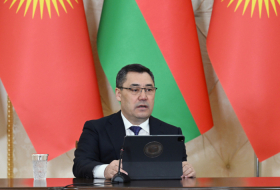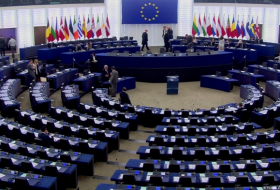The Quad is increasingly viewed as an important potential tool for delivering public goods in the Indo-Pacific and preventing China from achieving regional dominance. But a coalition comprising Australia, India, Japan, and the US is bound to face challenges.
US President Joe Biden’s decision not to attend next week’s scheduled meeting of the Quadrilateral Security Dialogue (the Quad) in order to continue his negotiations with US Republicans over America’s debt ceiling in no way diminishes the importance of the meeting. A strategic coalition of the Indo-Pacific’s four leading democracies – Australia, India, Japan, and the United States – is quickly gaining depth and momentum. Although the Quad Leaders’ Summit, which was to be held in Sydney next week, has now been postponed, the progress it has been making is certain to continue.
CARL BILDT urges the alliance to use its upcoming gathering to correct the mistake it made in Bucharest in 2008.
Even though each member of the group has its own objectives, interests, and challenges to navigate, the effort to contain China’s own strategic ambitions in the Indo-Pacific is now a shared priority of all four states. Both individually and together, they must navigate the reality that China may not be contained without a willingness to fight.
THE VIEW FROM AUSTRALIA | RICHARD MAUDE
Australia’s embrace of the Quad in the group’s second life is wholehearted and irreversible, reflecting deep, bipartisan concern about China’s current behavior and future intent in the Indo-Pacific.
The Quad is emblematic of an Australian foreign policy heavily geared to the search for a favorable “strategic equilibrium” in the Indo-Pacific in which “no country dominates, and no country is dominated,” to quote Foreign Minister Penny Wong. Canberra sees the economic and military weight of the US, Japan, and India as critical to these endeavors, in and out of the Quad format.
The times suit the Quad for other reasons. Japan and India join the US as bilateral relations of first order importance for Australia, with ever deeper cooperation sustained by a largely shared outlook on the region and strong economic ties. The Quad’s work on supply-chain security in critical minerals and technologies draws strength from these synergies.
The Quad sits comfortably within a long tradition of Australia seeking international impact through partnerships. It fits the Albanese government’s narrative of Australian “agency” – that Australia must not let others decide its future. And commitment to the Quad reflects a desire for diplomacy to lead in the Indo-Pacific, for all the recent investment in military deterrence.
Can the Quad deliver on these high Australian hopes? The group has momentum, but it is too soon to know.
Australia hopes the weight of the Quad creates some cautioning power. China wants desperately to prevent any coalescing of opposition to its regional ambitions, so the Quad’s “signaling” function is important and useful enough. It is less clear, though, if the Quad has had much restraining influence on China’s behavior to date.
Still, Australia hopes the Quad can support the resilience and sovereignty of Indo-Pacific countries, especially in Southeast Asia. Australia wants the Quad to deliver “security and growth for all” through initiatives focused on health security, clean energy, regional connectivity, and maritime domain awareness. Wong says this work is about “enabling choices.” Like other Quad partners, Australia does not want regional countries to drift entirely into China’s orbit.
For Australia, there is also a normative benefit to the Quad – a counterpoint to Beijing’s now determined efforts to reshape global governance to better suit China’s interests and authoritarianism. But with an eye to regional sensitivities, Australia highlights rules-based approaches to regional affairs, not the group’s democratic credentials.
For all its centrality in Australian foreign policy, the Quad creates some diplomatic challenges. First, the Quad highlights the divergence between Australia and many of its near neighbors, especially in Southeast Asia, about the nature of the challenge China poses and what to do about it. Southeast Asia worries about being caught up in a conflict, having to “pick a side,” and being sidelined – central issues but no longer relevant to the most pressing challenge of the age.
Wong rejects the idea that there is tension between the Quad and Australia’s support for Southeast Asia and ASEAN-centered architecture (like the East Asia Summit), arguing that the Quad is complementary to ASEAN’s own efforts to keep the peace. Still, inevitably, Australia deals with lingering concern that the Quad will both increase tension in the region and make ASEAN redundant.
Second, Australia’s Indo-Pacific balancing agenda, now encompassing not just the Quad but deeper force posture and deterrence cooperation with the US, the AUKUS partnership, and nuclear-powered submarines, operates in tension with the government’s desire to stabilize relations with China and restore an economic relationship damaged by coercive trade restrictions.
Whether these competing interests can be reconciled remains to be seen. So far, Beijing appears prepared to hold the course on stabilization. But China’s state media warns that continued progress depends on Australia “refraining from joining the US’ anti-China geopolitical game.”
OUTLOOK
Australia will be polite about Biden’s late cancellation to deal with the debt-ceiling crisis at home. A US default would be a much worse outcome in terms of perceptions of American reliability in the region, and the long contest ahead in the Indo-Pacific with China won’t be decided by a single Quad meeting. Still, there is disappointment. For the time being, at least, Australia misses a very rare opportunity to host the leaders of the US, Japan, and India at the same time.
Looking ahead, Australia isn’t interested in pushing the boundaries of the Quad too hard. It wants the Quad’s focus to remain diplomatic and practical. It is not interested in membership expansion. Nor does it want the Quad to develop a formal defense pillar, worrying that China and Southeast Asia will see this as the beginnings of an Indo-Pacific NATO.
Australia will want sufficient new deliverables from Quad summits to show momentum. Still, Canberra knows the greater risk to the Quad is failing to demonstrate that it can respond effectively to the needs of the Indo-Pacific, especially in Southeast Asia. If the Quad is to “enable choices,” it must deliver on its already sprawling agenda.
THE VIEW FROM AMERICA | DANIEL RUSSEL
The American view of the Quad has come a long way from its inception in response to the 2004 Indian Ocean tsunami, and the forum has undergone several reboots along the way – most recently under Biden, who raised it to the leaders’ level. Biden’s team took what its predecessors framed as an anti-China instrument and refashioned it as a vehicle for partnership among leading democracies to provide tangible benefits and public goods to the Indo-Pacific region through COVID-19 vaccine distribution and health programs, infrastructure, cybersecurity, academic exchanges, and emerging technologies. The thrust of the current approach is to prove that “democracies deliver” and that Washington and its partners have more to contribute than just traditional security. The Quad’s emphasis is less on what member countries can do for each other and instead on what they can do for the region, which has expanded beyond Asia into the Indo-Pacific. The Quad’s aim is not only to reinforce norms of behavior in the region by providing a superior alternative to the Chinese approach, but to do so in a way that addresses the needs and desires of countries in the Indo-Pacific region.
The Quad marries Washington’s emphasis on acting jointly with allies and partners in the effort to ensure that China is not the only game in town. By tapping into the strengths of each member, the Quad demonstrates that its whole is greater than the sum of its parts. Importantly, this reflects the priority placed on further integrating India into the collective effort to meet the China challenge. Washington seeks to draw India closer, taking advantage of Delhi’s outrage at Chinese incursions, and to model for the Indian government the kind of open communication and cooperation that has evolved in the trilateral US-Japan-Australia dialogue. The flip side of that is the opportunity the Quad offers to gain the perspective, advice, and global influence that India brings.
RISKS AND CHALLENGES
A significant risk is the growing disillusionment of countries in the region that feel the Quad has not adequately delivered on its promises thus far. Working groups in areas such as health, space, and infrastructure were created with great fanfare at previous Quad summits, but some Asian diplomats have complained that there is still little to show by way of results. New and valuable Quad initiatives have been rolled out, such as the Indo-Pacific Partnership for Maritime Domain Awareness – something the region deeply desires and desperately needs as a tool to protect maritime resources from predatory illegal fishing, but which has been very slow to take shape.
Regional concern that the Quad would become a rival challenging ASEAN centrality in the region’s architecture seems to have subsided from intense angst early on to a more manageable level of discomfort. However, determining how to hold high-level Quad convenings and provide public goods without alienating ASEAN or appearing to compete with the ASEAN-based structure remains a challenge.
Lastly, the divergence of interests between India and the other three Quad members could be a problem with respect to China, since Delhi is understandably far more focused on China’s activities in Pakistan or the Galwan Valley than in the South China Sea or Africa. Differences regarding Russia are even more problematic, particularly as the US, Japan, and Australia press India to align more closely with them despite Delhi’s heavy dependence on Russian military equipment and inexpensive oil and gas.
LOOKING TO THE QUAD SUMMIT
For the Biden administration, the Sydney summit, planned to come on the heels of the G7 summit in Hiroshima and a possible meeting with Pacific Island leaders, was meant to be a celebration of “mateship” and common interests. Like bureaucracies everywhere, US officials are hardwired to push for shiny new initiatives to garland the presidential visit. However, the Quad would be better served by using the media reach of the next Quad summit to showcase its accomplishments over the past two years rather than by launching yet another initiative. Telling the story of what the Quad has achieved and highlighting the benefits to non-Quad countries will carry far more weight than promises – particularly amid uncertainty over the outcome of the 2024 US presidential election. It will also help to underscore the reassuring message that the Quad is focusing on meeting the region’s needs rather than addressing a threat.
If a new chapter is to be opened in the Quad playbook, it would ideally focus on ways to involve and leverage the private sector in the Quad’s agenda. After all, the free-market and innovative Quad economies represent close to 30% of global GDP, and, ultimately, it is companies, not governments, that will provide the investment, know-how, technology, and commerce that the region values and wants.
THE VIEW FROM JAPAN | TAKAKO HIKOTANI
So much has happened in Japan since the last Quad Summit in Tokyo in May 2022. In July, Abe Shinzō, former prime minister of Japan and chief architect of the Quad, was assassinated. In December, the Japanese government issued three new security documents, including a $316 billion Defense Buildup Plan, which outlined a strategy to fundamentally strengthen the country’s defense capability over the next five years. In March, Fumio Kishida, Abe’s successor, made a surprise visit to Ukraine, coinciding with Chinese President Xi Jinping’s visit to Moscow. Kishida has emerged as a surprisingly active and bold leader: perhaps not as charismatic as Abe, but possibly more decisive on the world stage.
Where does the Quad fit into these developments? Currently, attention to this year’s Quad Leaders’ Summit seems to have taken a back seat to the G7 ministerial meetings and this weekend’s G7 summit in Hiroshima. However, we can see the relevance of the Quad in Kishida’s recent policy initiatives.
For Japan, the Quad has always been an important means to achieve a Free and Open Indo-Pacific (FOIP) – to “bring India in, keep the US engaged, and forge closer ties with Australia.”
The Quad is also a platform through which Japan seeks to exercise leadership. In the past year, Kishida has reiterated that the international community is at a historic turning point; that the free, open, and stable international order is in danger; and that Japan is resolved to “proactively create peace and prosperity and a free and open order worldwide.” During his March 2023 visit to India, Kishida announced four pillars of cooperation for FOIP: (1) principles for peace and rules for prosperity, (2) addressing challenges in an Indo-Pacific way, (3) multilayered connectivity, and (4) extending efforts to ensure the security and safe use of the sea to the air. While Kishida did not explicitly mention the Quad, the “rulemaking through dialogue” and “equal partnership” approach is precisely what the Quad is designed to do.
Kishida has also put forth two new initiatives for the Quad: to serve as a bridge to the Global South and to forge relations with “like-minded (partner) countries.” The recently announced operating principle for Official Security Assistance (OSA) is a new program intended to bolster the defensive capabilities of regional allies. Procuring surveillance radars for the Philippines may be followed by similar support toward Malaysia, Bangladesh, and Fiji. Japan’s Official Development Assistance (ODA) charter will also be revised, and together with OSA, Japan will seek to expand its network of partner countries to counter authoritarian states. Japan hopes to reach out to the Global South through India, this year’s G20 leader, and to work with its three Quad partners on infrastructure development, maritime security, and disaster assistance.
Foreign Minister Yoshimasa Hayashi stated during the Quad foreign ministers’ meeting in Delhi that the Quad is like a soft version of the Beatles: “the members are fixed and close but each member can act solo.” This is how Japan wants to keep the Quad: no membership expansion and flexibility to pursue individual action. The challenge going forward will be whether “the band” can produce consecutive hits like the Beatles, work together cohesively, pool resources to invest effectively, and generate public goods for the region, so that, as Hayashi put it, “we can do much better than just one plus one plus one plus one is four, but instead six, seven, or eight by coordinating and listening.”
RISKS AND CHALLENGES
The challenge for the Quad will be delivering outcomes that benefit the entire Indo-Pacific region. To that end, Japan should work with the Quad members to make the most of newly announced government-led investments in the region. Kishida has promised $75 billion in infrastructure investment in the Indo-Pacific region by 2030, in public and private funds, through private investments, yen loans, and other means. In addition, following its revision of the ODA charter, Japan is introducing a new framework for “private capital mobilization-type” grant aid to support startups by younger people. Japan seeks to work with regional partners that support this idea. Kishida made this announcement as part of his speech in Delhi, but as the subsequent surprise Ukraine visit stole the news, it may not have received the attention that it deserves.
Japan should continue the positive momentum of the G7 Hiroshima summit. Both Australia and India will be attending the G7 summit. Other countries invited to the summit, including the Republic of Korea, Indonesia, Vietnam, Brazil, the Cook Islands (representing the Pacific Islands), and Comoros (representing Africa), are all important partners for the Quad.
With the cancellation of the Sydney summit, the meeting of the four Quad leaders is now scheduled to take place in Hiroshima. It was just announced that on the same day, Ukrainian President Volodymyr Zelensky will be attending the G7 summit. It would be a historical diplomatic moment for Japan, and Kishida should rise to the occasion.
THE VIEW FROM INDIA | C. RAJA MOHAN
Although India has a huge stake in the success of the Quad, Delhi is viewed by some as the “weak link” in the forum. One reason for this perception is India’s reluctance to join the West in condemning the Russian invasion of Ukraine. The other is Delhi’s opposition to the Quad as an explicit security forum.
These perceptions are rooted in the tendency to view the Quad through the lens of a formal alliance. This view makes it difficult to understand the role of India, which, unlike Australia and Japan, is not a treaty ally of the US.
Conscious of this crucial difference, the Biden administration has avoided any sharp criticism of India on the Ukraine crisis. Fending off questions about India’s ambivalence on the Russian invasion, Washington has argued that the US is in a “long game” of engagement with India. While Russia represents the immediate threat to the West, the US recognizes the greater and more persistent challenges coming from China and acknowledges that India is central to addressing those challenges.
Having a large, non-aligned nation like India that celebrates its Asian identity brings valuable political and ideological heft to the Quad amid China’s efforts to mobilize anti-Western sentiments to bolster its quest for dominance over Asia.
India’s long-standing dependence on Russian weapons, at a time when it is locked in a serious border conflict with China, has certainly constrained its room for maneuvering on the Ukraine crisis. Yet Delhi has not allowed the relentless Russian criticism of the Quad to deter it from strengthening the forum.
Entrenched legacies of “non-alignment” and “strategic autonomy,” to be sure, have made Delhi extremely cautious of entering into “alliance-like” arrangements. Yet the Quad’s story is really about India moving closer than ever before to the US and its Asian allies and overcoming its historical ideological hesitations. While India is opposed to making the Quad a military alliance, it has significantly expanded its bilateral defense cooperation with the three partners in the forum.
RISKS AND CHALLENGES
As India faces unprecedented threats from China – strategic, military, economic, and political – building coalitions to balance Beijing is central to Delhi’s calculus. This has coincided with dramatic changes in the perceptions of China in Canberra, Tokyo, and Washington.
The revival of the Quad in 2017 and its advances since then are directly correlated with the sharpening of tensions over the disputed Himalayan frontier between China and India. It also corresponds to fundamental changes in the debate on China within the US. This has led to the first-ever strategic convergence on China and the Asian order between Delhi and Washington since World War II.
India’s greater engagement with the US, of course, is tempered by an enduring feature of its strategic culture – a preference for relying on deliberate incrementalism rather than making quick, bold departures.
India’s opposition to turning the Quad into an anti-China alliance is now shared in Canberra, Tokyo, and Washington. Instead, the Quad’s goal is to build a loose coalition that could constrain Beijing from building a China-dominated order in Asia and its waters.
All four states agree that while strengthening the resistance to Chinese expansionism, they should consciously avoid escalation of tensions with Beijing. Managing this tension is one of the main strategic challenges to the Quad. This challenge is particularly acute for India, whose army has been in a face-off with the People’s Liberation Army in the Himalayan heights since the spring of 2020.
LOOKING TO THE QUAD SUMMIT
The Quad has been criticized from two very different standpoints. On the one hand, there are those who ask what consequential things the Quad has done recently. On the other are those who see the Quad as a major threat to the current regional order.
Building the Quad coalition into an effective regional institution will certainly take time; however, the time has come to focus on a few critical issues rather than pursuing an expansive Quad agenda grounded in arguments to prove its regional “relevance.”
Three broad outcomes should be of interest to India. First, the Quad must articulate a sharp critique of the Chinese discourse, which has become more ambitious to include ideas such as the Global Development Initiative and Global Security Initiative (GSI). Second, in highlighting the implications of Ukraine for Asia, the Quad must underline the importance of “territorial sovereignty” and “rejection of use of force to change borders” as core principles in any Asian order. Third, the Quad must develop ideas for drawing other Asian countries, such as South Korea, into the forum as “dialogue partners” and members of ad hoc working groups.
CHINA’S RESPONSE TO THE QUAD | BATES GILL
Never positive, China’s views of the Quad have shifted over time from dismissive to derogatory to damning. But beyond a focus on this harsh rhetoric, it is important to understand what the Quad symbolizes within Beijing’s worldview and why that portends a more contested relationship between the Quad and China in the future.
When the Quad was still in its formative stages and struggling to find coherence and relevance, China’s Foreign Minister, Wang Yi, memorably scorned the group in 2018 as mere “sea foam in the Pacific or Indian Ocean” that would “soon ... dissipate.” Less disdainful two years later, Wang portrayed the Quad as an effort to build “an Indo-Pacific version of NATO.” More recently, Chinese Foreign Ministry spokespersons have likened high-level Quad meetings to “exclusionary blocs” and warned that “[b]uilding small cliques and stoking bloc confrontation is the real threat to a peaceful, stable, and cooperative maritime order.”
Although this year’s Quad Leaders’ Summit in Sydney will not take place, we should nevertheless expect more of the same from Beijing if and as the Quad continues to gain momentum as an effective global and regional actor.
But for China, there is more to countering the Quad than bombast. For China’s leaders, the Quad forms part of a larger set of security and political challenges that it confronts on the international scene.
Since its founding in 1949, the People’s Republic of China (PRC) has never been comfortable with the presence of alliances or other security partnerships on its periphery. That is certainly true of US-led alliances and other security pacts, which are the constant object of Chinese criticism, wedge tactics, and threats. While the Quad is far from a formal alliance, Beijing understands that the group shares a deep concern with China’s growing role in the Indo-Pacific and beyond, and that it has the potential – if not the tacit intention – to impede China’s rise.
When Xi openly condemned “US-led Western countries” for seeking to “contain, encircle, and suppress China” in a recent speech to Chinese leaders, he no doubt had in mind the US alliance system in the Indo-Pacific and the AUKUS pact, as well as the Quad.
Moreover, Beijing understands that the Quad’s overarching objectives – especially its “commitment to a free and open Indo-Pacific that is inclusive and resilient” – implicitly take issue with China’s authoritarian form of governance and seek to push back against its ambitions and interests in the region and beyond. Therefore, in China’s eyes, the Quad is part of the broader political and ideological challenge facing Beijing, especially in its relations with more open, liberal, and democratic societies around the globe.
In short, in China’s view, the Quad has increasingly come to represent much of what is wrong with the world.
Looking ahead, it is likely Beijing will negatively compare the mission and aims of the Quad with Chinese undertakings in the Indo-Pacific and in the Global South more broadly. While the Quad will be disparaged for its hegemonic intentions, in contrast, Beijing will cast its own forms of China-led multilateralism – such as the Shanghai Cooperation Organization; the Forum on China-Africa Cooperation; the China-Arab States Summit; the China-Central Asia Summit; the China-Horn of Africa Peace, Good Governance and Development Conference; and many others – as “inclusive,” “win-win,” and “mutually beneficial,” as well as proof positive debunking the “China threat” narrative.
More broadly, we can expect the Quad and other “Western” and/or US-supported security frameworks to be disapprovingly compared with China’s recently launched GSI.
Announced by Xi in April 2022 and elaborated in a PRC Foreign Ministry concept paper in February 2023, the GSI is increasingly featured in China’s official declarations and in bilateral and multilateral statements with other parties. It is touted by PRC officialdom as a new framework to eliminate sources of conflict, strengthen global security governance mechanisms, and achieve sustainable peace and development. Most recently, the GSI was credited for the success of the Beijing-brokered resumption of diplomatic ties between Iran and Saudi Arabia. On the other hand, in the Chinese telling, frameworks such as the Quad – unlike the GSI – need to eschew “power politics,” “bloc confrontation,” “hegemonism,” and “Cold War thinking.”
In the face of greater coherence and pushback among US allies and security partners, and entering a period of far greater competition and contestation with those powers, China is pushing back, competing and contesting in ways of its own. In recognizing these challenges, Xi has repeatedly called on the Communist Party of China and the Chinese people to surmount them by “daring to struggle” and “daring to win.” As the Quad gains strength, it will be increasingly seen in Beijing as a critical player in that larger contest for the future.
Richard Maude, a senior fellow at the Asia Society Policy Institute, is Head of the Epidemiology Department at Mahidol Oxford Tropical Medicine Research Unit.
Daniel Russel, a former US assistant secretary of state for East Asian and Pacific affairs, is Vice President for International Security and Diplomacy at the Asia Society Policy Institute.
C. Raja Mohan, a senior fellow at the Asia Society Policy Institute, is a visiting research professor at the Institute of South Asian Studies at the National University of Singapore.
Takako Hikotani, a senior fellow at the Asia Society Policy Institute, is a professor at the Gakushuin University International Center.
Bates Gill is Executive Director of the Center for China Analysis at the Asia Society Policy Institute.
More about:








